YouTube Music: an advertising strategy that brought it to the top
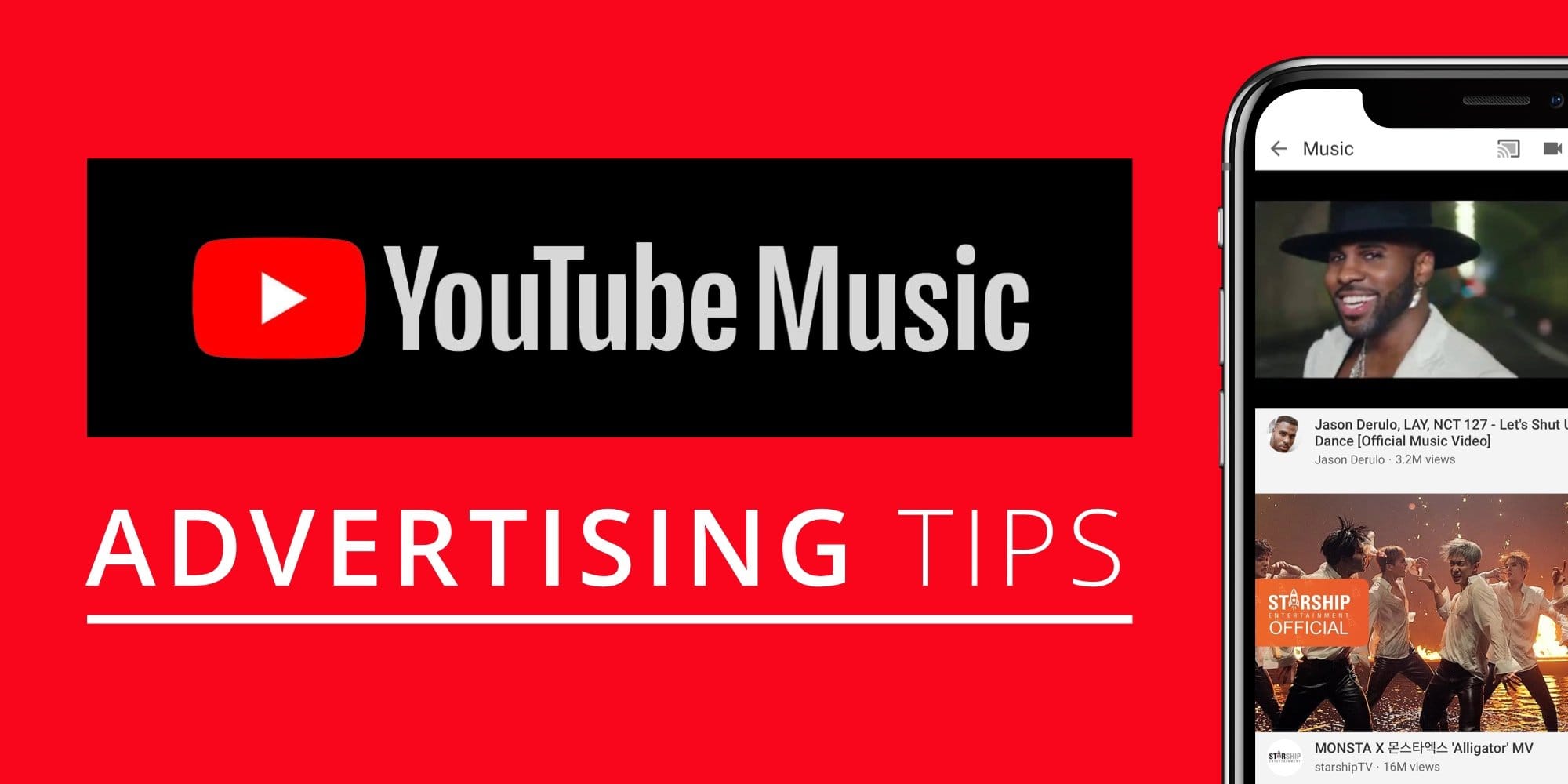
Nowadays YouTube Music is considering as one of the largest music streaming services alongside Spotify, Apple Music and Pandora that grew up from a radio streaming service. How did YouTube handle the competition on the market throughout 5 years of its growth? And what type of marketing strategy was implemented by Google to promote this service the best possible way?
A long way up
YouTube music was founded in 2015 as a part of YouTube Red subscription. Subscribers could enjoy Ad-free videos as well as new correlated music streaming platform. App developer proclaimed that service to be a YouTube built just for music and revealed its best competitive advantage - the app lets you listen to your favorite songs but also remixes, covers, lyric videos and concert footage i.e. all YouTube content.
From 2015 to the spring of 2018 YouTube Music is holding a stable position in AppStore & Google Play in the US.
As of April 25, 2018, YouTube Music in on the 4th line in App Store Top Chart and on the 3rd line in Google Play.
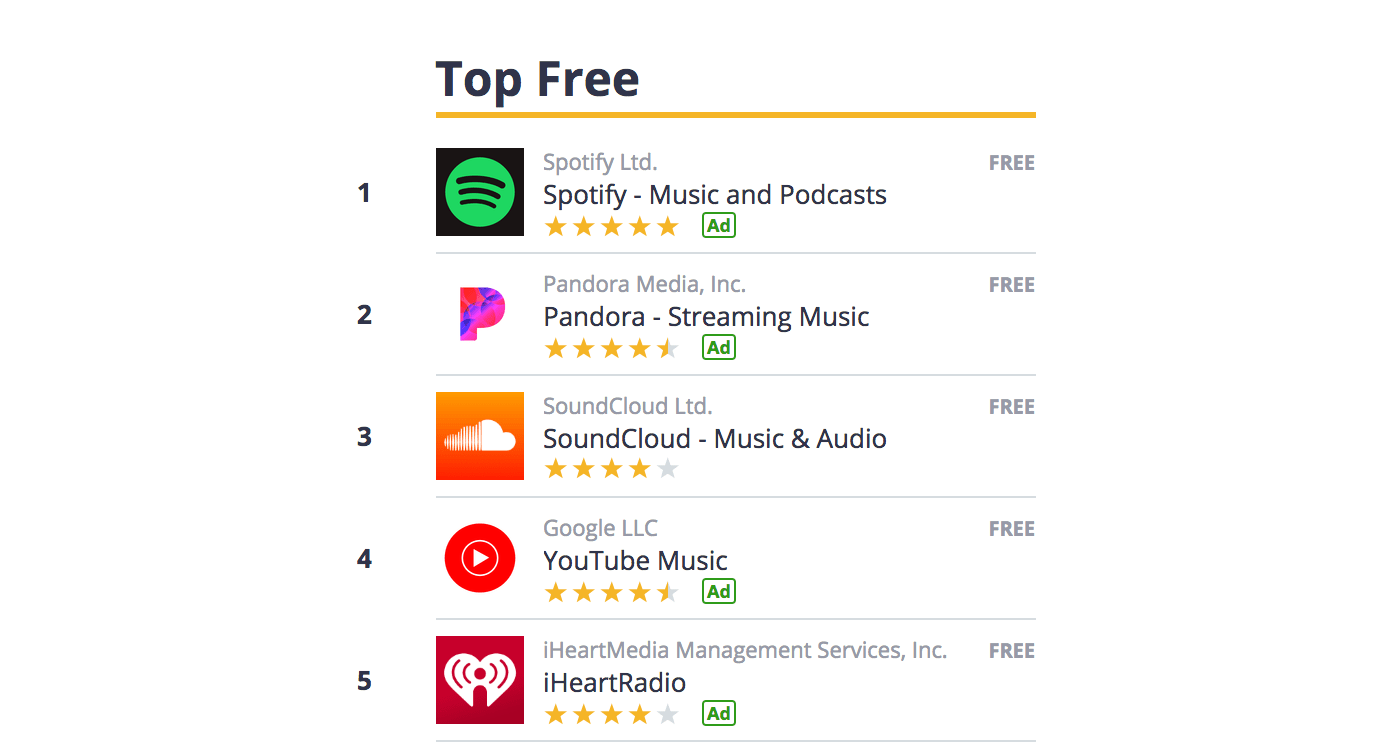
However, we cannot say that the application was just as popular in other countries. In Europe, Spotify remained a market leader.
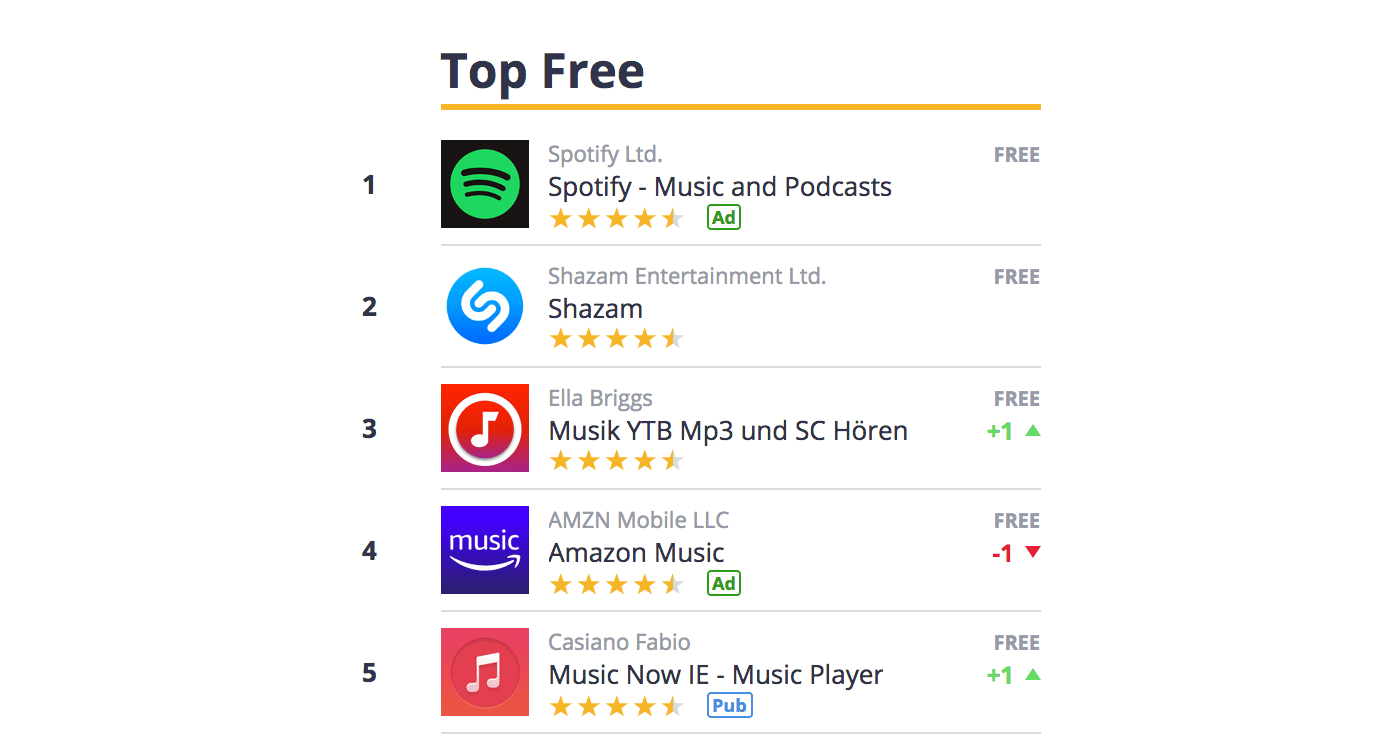
Spring 2018 was a turning point for the application. On May 18, 2018, YouTube revealed a new streaming service made for music. The interesting point here is that despite the fact that by the time the new version of the application was released the service existed for 3 years, YouTube asserted the tool as a completely new product.
New YouTube Music comes with all old features as access to hard-to-find music, playlists, recommendations, and downloads. A key point here is a type of subscription. Now YouTube Music provides a subscription separate from YouTube Red or YouTube Premium.
A member will pay $9,99 per month for YouTube Music Premium account with no reference to YouTube Premium subscription. However, a new member of YouTube Premium now will pay $11.99 for monthly access to ad-free videos, background play, downloads, AND music platform.
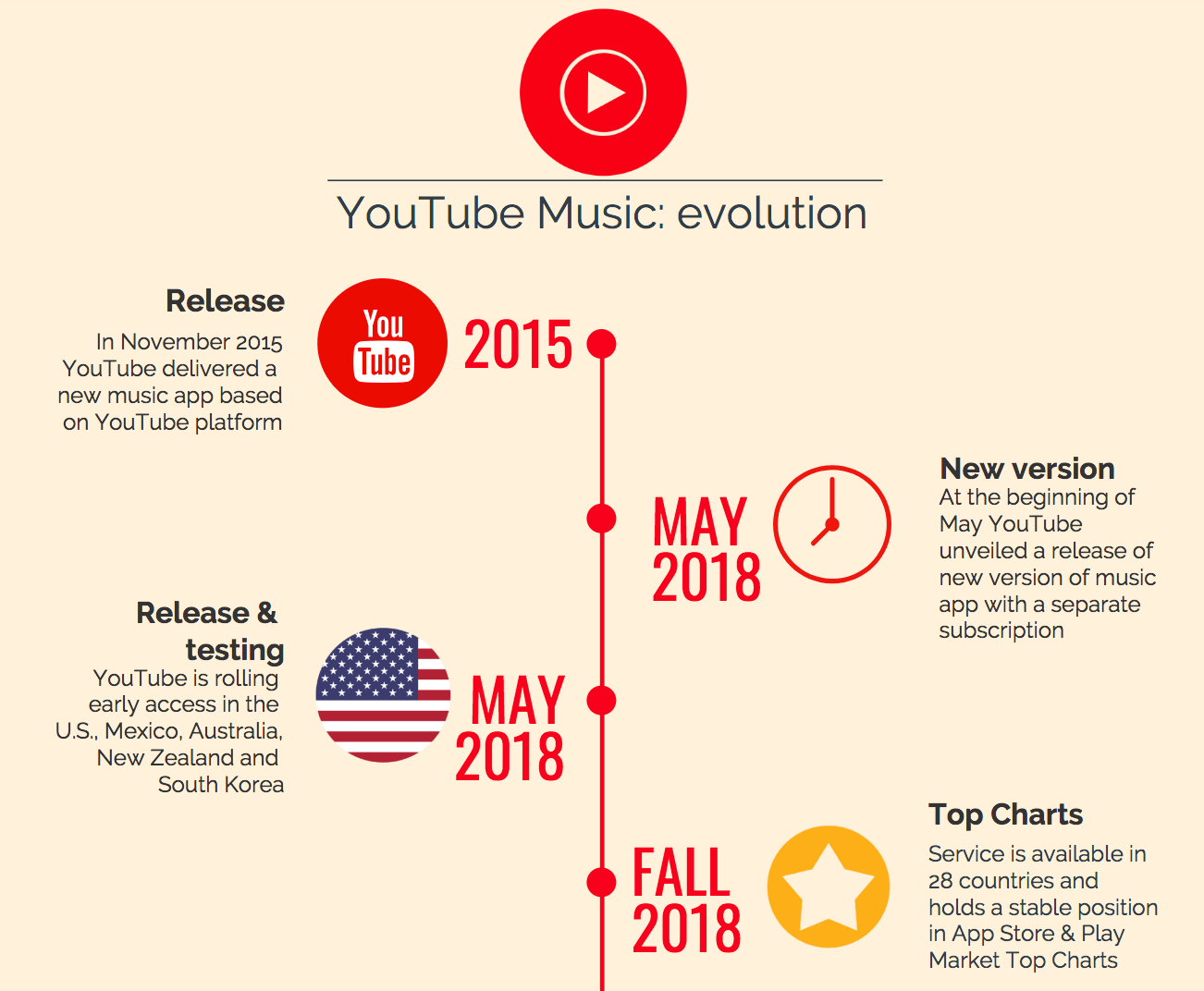
YouTube Music got to the charts all over the world pretty quickly. From May 2018 to February 2019 it’s making one of 10 Top Free and 10 Top Grossing in AppStore & Google Play.
Let’s check app’s dynamics in Top Charts of AppStore for the period from May 2018 to the present day.
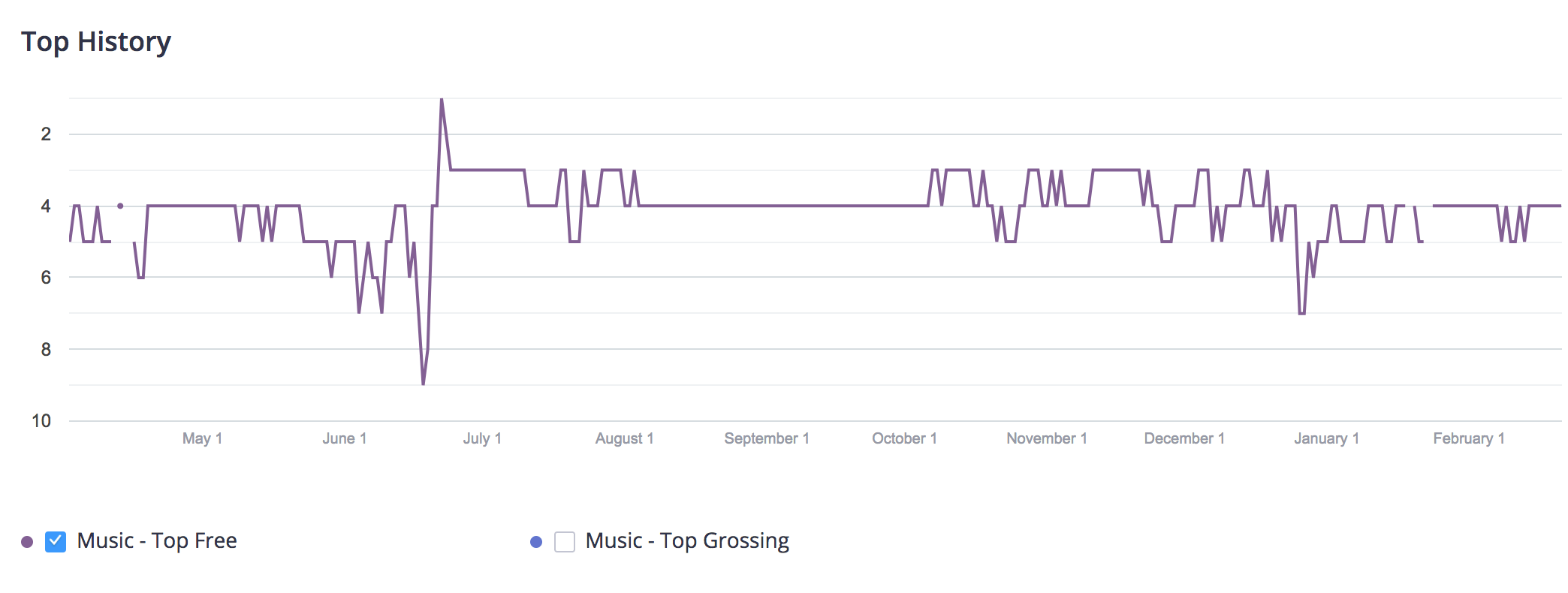
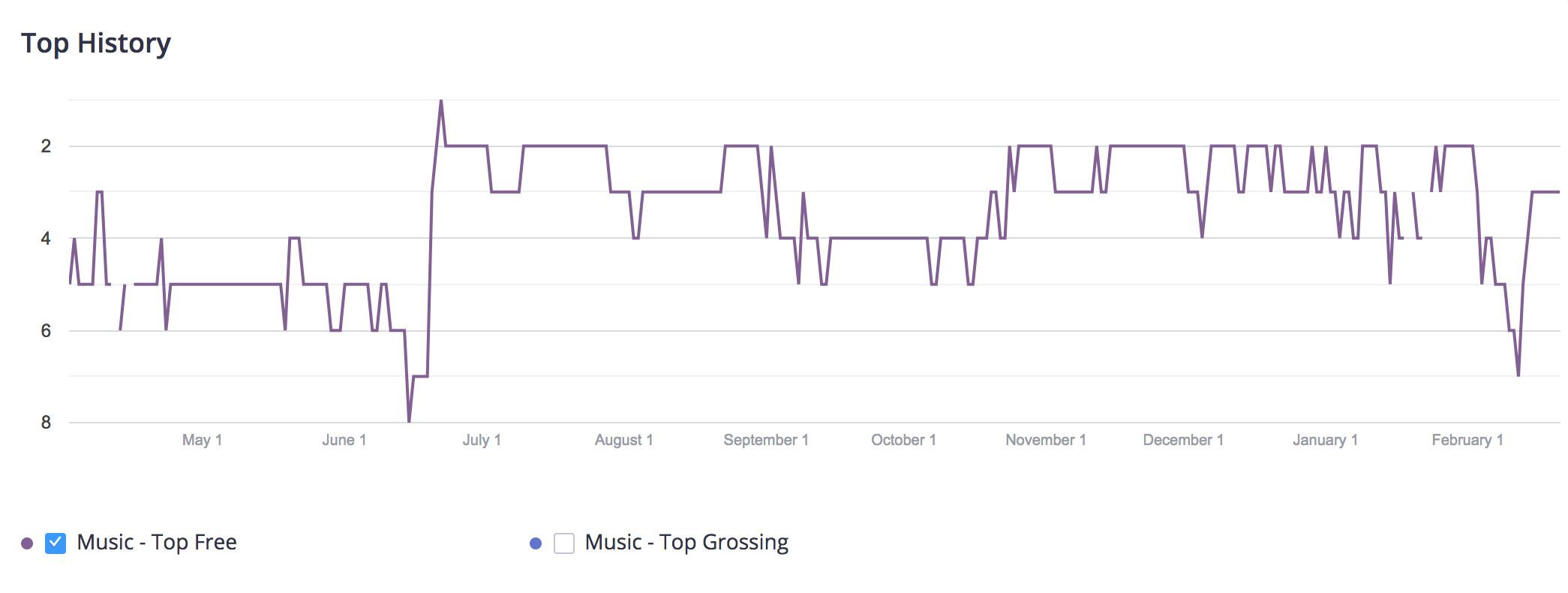
Over 10 months YouTube Music application is ranging from 1st to 10th place in AppStore Top Chart in category «Music». Great results except from the middle of June 2018 - both Mexico and US noted a sudden decline. What’s the reason?
Although we don’t know for sure, we could connect it to the fact that June 18, 2019 YouTube Music released an application in 12 new countries and launched the Premium subscription.
Advertising campaign
First of all, of course, the huge part of YouTube Music Ad goes to its parent platform - YouTube. We’ve seen a set of appealing videos describing private life moments of 5 different people listening to their favorite music. A slogan is «It’s not just what we listen to. It’s who we are».
Then, after 1 year, YouTube Music released a new bunch of creatives including «Open the world…» and «Your sounds…» video series. And 4 videos made for Spanish-speaking audience. You can check it on YouTube Music official channel on YouTube.
Second, being a huge well-known service, YouTube Music is still advertising in applications besides YouTube. Apptica lets us take a closer look at the evolution of in-app advertising campaign of YouTube music.
- Divide and rule
Market segmentation is one of the key points of the effective PR strategy. Big companies that are running for a global reach have to divide their target audience into few parts and work deeply on it. On top of this, the first release may turn out to be not as good as publisher expected and the idea of testing application on a small group will make sense.
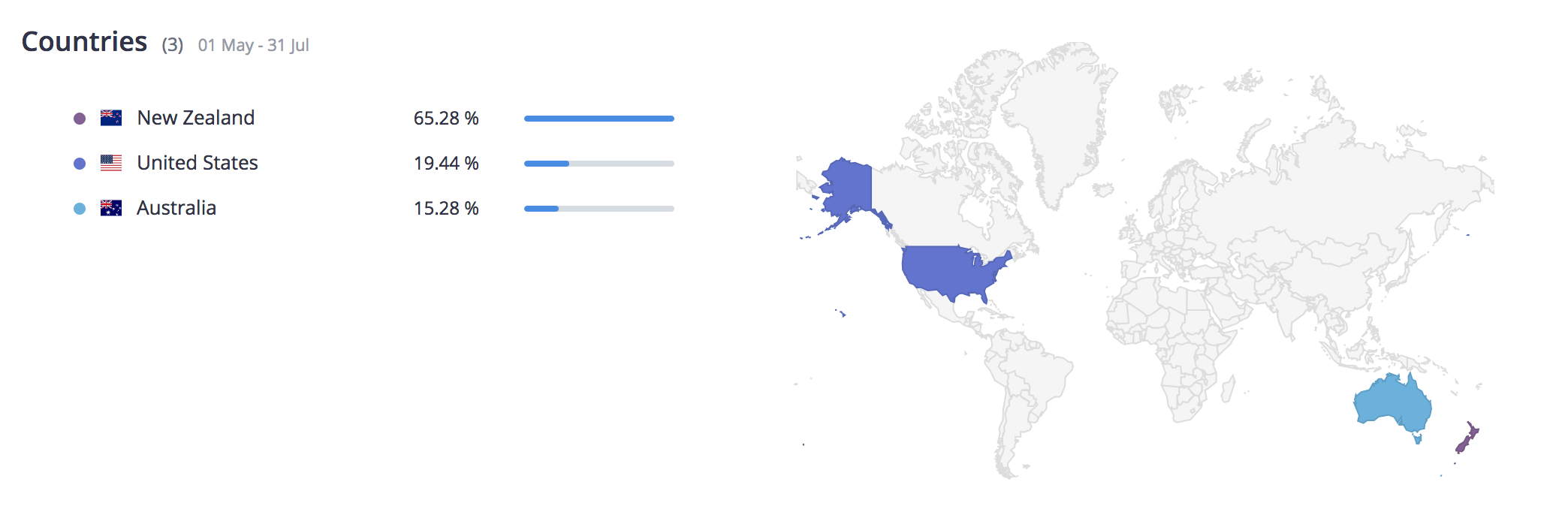
YouTube Music starts with the most familiar and responding English speaking area - New Zealand, US and Australia. For the period from May 2018 to July 2018 these are the only 3 countries where we can see in-app ads.
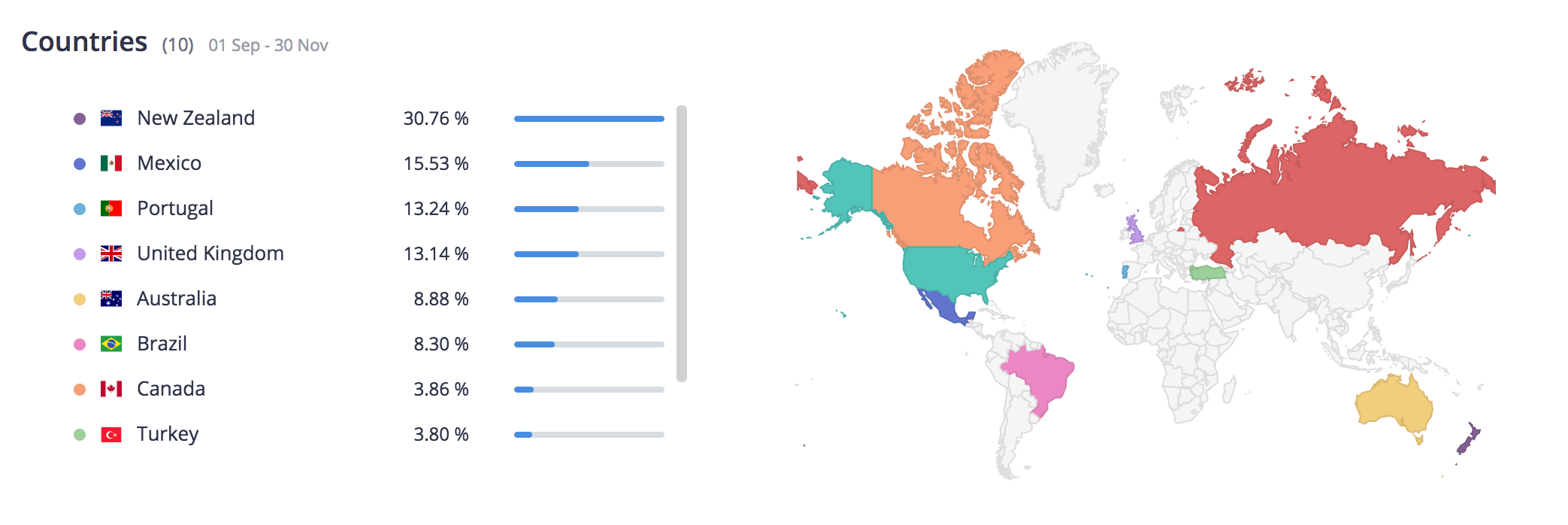
In Autumn Advertising switches to Mexico, Brazil, UK and a little bit of Russia

Next step is Europe - Spain, Portugal, Italy, Netherlands and also Japan.
- Step by step
Walking step by step, YouTube Music is testing different apps to post ads in. At the very beginning, there is a variety of categories from (obviously) music to even racing. But then the amount of apps reduces and for the moment there are 3 large categories such as Entertainment, Utilities, and Music.

- Personal service
Another crucial thing about advertising policy is customization. Adapting Ad by not only changing language but also changing color, Ad type, content. You probably saw this video Ad followed by a catchy and groovy song by Cardi B (this one with «I said I like it that» and a whole couplet in Spanish). This video was translated all over 28 countries except… Brazil.
We’re still looking for the explanation of this fact but only for Brazilian customers, YouTube Music created a brand new video with a song in Portuguese and compilation of Brazilian pop music videos.
Compare
Waiting for new YouTube Music tools and Advertisement insights!



